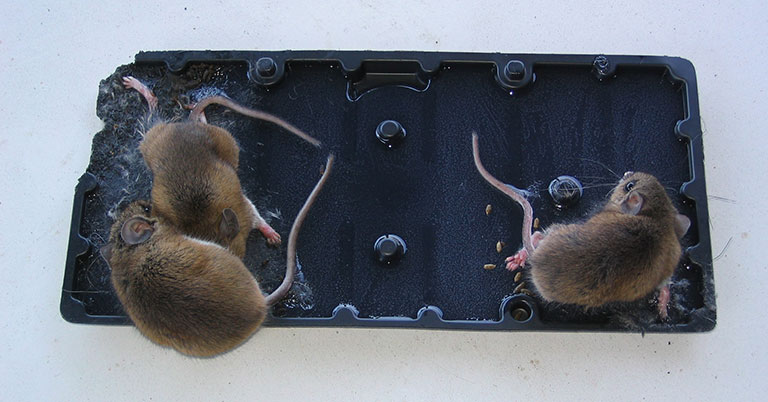
This Is How It Feels To Be An Animal Stuck In A Glue Trap
- Thomas Nelson
- October 14, 2023
- Animals
- 0 Comments
Glue traps are a pretty common pest control method that many of us don’t think twice about. But when an animal becomes ensnared in a glue trap, it is a nightmare of unimaginable suffering. These seemingly innocuous household items are designed to catch pests, but the cruel reality is that they often capture innocent creatures who endure excruciating torment. The experience of being stuck in a glue trap is a harrowing ordeal, as animals endure prolonged agony, injuries, and an agonizingly slow death.
The Fate of the Trapped
Once an animal becomes stuck to a glue trap, their grim fate is almost always sealed. Contrary to the assumption that they meet a quick and painless end, the unfortunate truth is that they suffer for hours, and in some cases, even days. As they struggle frantically to break free from the adhesive grip, their energy dwindles, leading to exhaustion, hunger, and thirst. The glue, designed to immobilize, becomes a relentless adversary, holding the animal captive in a merciless battle for survival.
The physical toll on animals ensnared in glue traps is equally distressing. As they writhe and attempt to escape, they often sustain painful injuries. Limbs may be strained or broken, leaving the animal in agony. For birds, in particular, the ordeal takes a devastating toll on their feathers, leaving them severely damaged and mangled. With each struggle, the animal’s condition deteriorates, compounding their suffering.
Glue Traps Often Trap Non-Target Animals
One unfortunate and disturbing aspect of glue traps is that they often do not discriminate between their intended targets and unintended victims. While these traps are designed to capture specific pests such as rodents or insects, they frequently ensnare unintended animals as well. This lack of selectivity adds another layer of cruelty to their use.
The indiscriminate nature of glue traps means that any curious or unsuspecting creature that comes into contact with the adhesive surface can find itself trapped. This can include innocent animals like birds, reptiles, and even pets like cats and dogs. Such incidents lead to a tragic and unintended consequence: animals that were never the target of these traps suffering needlessly.
The problem is compounded by the fact that once an animal is stuck to the glue, it is often challenging to release them without causing harm. This further highlights the inhumanity of glue traps and underscores the importance of choosing alternative, humane methods of pest control that do not subject innocent animals to undue suffering and death.
Without Intervention, a Slow and Painful Death
If an animal caught in a glue trap is not discovered and freed promptly and with utmost care, their destiny is grim. The slow and torturous path to death continues unabated, as exhaustion, dehydration, and starvation ultimately claim their lives. It’s a tragic end that no creature deserves.
If you encounter a live animal caught in a glue trap, it’s essential to resist the urge to attempt a rescue yourself. Without the necessary training and equipment, your efforts may inadvertently cause further harm to the animal. Instead, the best course of action is to carefully place a ventilated box over the trapped creature, ensuring their safety, and contact your local wildlife rehabilitation center. Trained professionals can provide the specialized care needed to give the animal its best chance at survival.
The Rehabilitation Process
When animals are rescued from glue traps, they undergo a meticulous and compassionate rehabilitation process. The first step is to delicately remove them from the adhesive substance, often using a small amount of oil to loosen the grip. In some cases, sedation may be administered to minimize stress and reduce struggling. Once free, the animal is thoroughly assessed for injuries and feather or fur damage. They are provided with essential fluids, nutrition, pain relief, and antibiotics if required.
The process of cleaning the remaining glue off the animal’s feathers, fur, or scales is carefully timed, with several days of stabilization preceding this critical step. Sedation or anesthesia is typically employed to ensure the patient remains as comfortable as possible. The glue is gently removed using a canola or soy-based oil, followed by a thorough wash with dish detergent in warm water. After this trying ordeal, the animal is dried and placed in a warm incubator to recover. When they are clean, dry, and healthy, they are transferred to an outdoor enclosure to regain their strength and prepare for their eventual release back into the wild.
Taking Action to Prevent Glue Trap Suffering
Preventing animals from falling victim to glue traps starts with responsible choices. Never use glue traps, sheets, or boards in your pest control efforts. Instead, seek out reputable pest control companies that employ humane exclusion and deterrent methods. These companies will prioritize your family’s safety, the well-being of your pets, and the preservation of wildlife.
Furthermore, educate your friends and family about the inherent cruelty of inhumane pest control methods. Spreading awareness about the suffering caused by glue traps is a simple yet crucial step in protecting our wildlife. Together, we can create a world where animals no longer have to endure the horrors of being stuck in a glue trap, and we can build a more compassionate and humane society for all living creatures.
Alternatives to Glue Traps
There are several effective and humane alternatives to glue traps for pest control. These methods prioritize the well-being of animals while still addressing the issue of unwanted pests. Here are some of the best alternatives:
- Live Traps: Live traps capture pests without harming them. Once caught, you can release the animal far away from your property, ensuring its safety and preventing it from returning. Live traps are available for various types of pests, from mice to raccoons.
- Ultrasonic Repellents: Ultrasonic devices emit high-frequency sounds that are unpleasant for rodents and some insects, driving them away without causing harm. They can be a non-invasive and eco-friendly solution to keep pests at bay.
- Sealing and Exclusion: Prevent pests from entering your home or property by sealing gaps, cracks, and other entry points. Properly sealing your home is a long-term, effective solution that avoids the need for traps altogether.
- Natural Predators: Encouraging natural predators of pests, such as owls, hawks, and beneficial insects, can help keep pest populations in check. You can create habitats that attract these predators to your property.
- Maintaining Cleanliness: Regular cleaning and proper storage of food, as well as maintaining a tidy environment, can help deter pests by removing their food sources.
- Pheromone Traps: Pheromone traps are designed to attract and capture specific insects using sex pheromones. They are effective for monitoring and controlling certain insect populations.
- Consulting Pest Control Professionals: If your pest problem persists and alternatives haven’t been effective, consider consulting a pest control professional. They can provide targeted and humane solutions while adhering to local regulations and ethical standards.
It’s important to remember that the most effective pest management often involves a combination of methods. Avoiding glue traps and opting for humane alternatives not only prevents unnecessary suffering to animals but also promotes environmentally responsible pest control practices.

